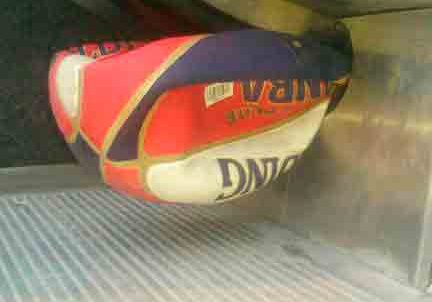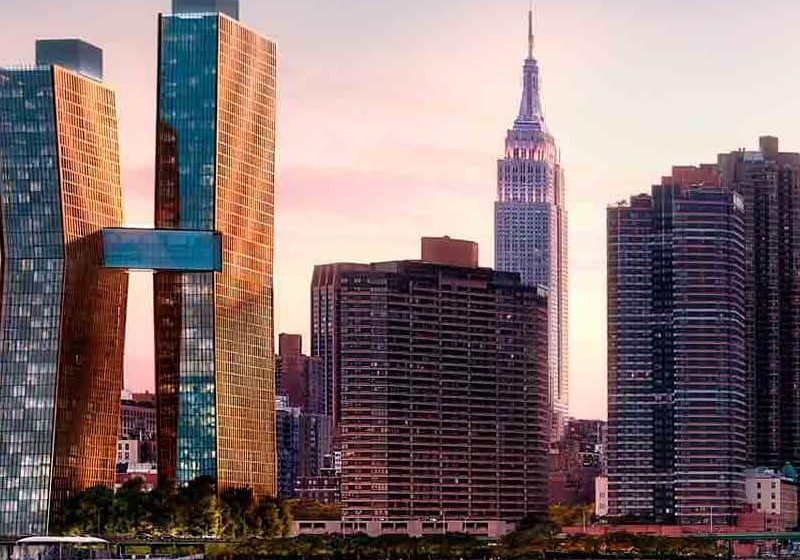Hudson Yards and the High Line
Mar 1, 2018

One landmark leads to another in Manhattan’s developing “New West Side.”
On a recent trip to New York City, your author walked the famed and beloved High Line for the first time. A former rail line turned public park, the High Line was donated to the City of New York by CSX Transportation, Inc. in November 2005. Since then, the raised out-of-use railroad trestle has been converted to a popular greenspace running from Gansevoort Street to West 30th Street along 10th Avenue and culminating in the massive under-construction Hudson Yards development.
The High Line proves popular with tourists for a variety of reasons; its elevated situation provides a unique perspective of the city, and the history behind the High Line and its transformation is both interesting and impressive. For the architecture enthusiast, there is much to see, including one of the last works by Pritzker-Prize-winning architect Zaha Hadid, 520 West 28th St. For the nature lover, the planting design, inspired by the self-seeded landscape that grew on the rail tracks during the 25 years after trains stopped running, is a wonder. And, for the elevator enthusiast, there is much to delight in, as well: the car-parking system at the High Line’s entrance; the elevators at 16th and 23rd streets that make the High Line accessible to all; and the immense Hudson Yards development, particularly the recently completed 10 Hudson Yards.
Hudson Yards, the largest private real-estate development in U.S. history and the largest development in New York since Rockefeller Center, sits on a more-than-18 million-square-foot site and will include approximately 100 retail shops; restaurants; more than 4,000 residences; 14 acres of public open space, which will include as its centerpiece the Thomas Heatherwick-designed Vessel, composed of 154 interconnecting flights of stairs and 80 landings; a 750-seat public school; an Equinox® branded luxury hotel; and The Shed, a new center for artistic expression.
Most of the components of Hudson Yards are still under construction, and will be for the next few years, but, at the time of my visit, much of the Eastern Yard was visible; the shell of The Shed was standing and easily identifiable, as was 15 Hudson Yards behind it and 35 and 55 Hudson Yards to the right of it. And, while The Shops & Restaurants at Hudson Yards building was fenced off and difficult to see, 50 Hudson Yards was well underway and towering beyond it.
Return visits will be required to see so much of what’s now in progress, but the recently completed 10 Hudson Yards was open for business and visitors. Designed by Kohn Pedersen Fox Associates, 10 Hudson Yards opened in May 2016 and stands 895 ft. tall with dramatic views of the city and Hudson River. The 1.8-million-square-foot, Leadership in Energy and Environmental Design-Platinum commercial tower houses Coach, Inc., L’Oréal USA, SAP, The Boston Consulting Group, VaynerMedia, Intersection and Sidewalk Labs. It connects directly to the High Line, bridging over the elevated park to create a 60-foot public passageway that extends through the building. It will also offer a direct connection to the Public Square and Gardens when they are complete.
10 Hudson Yards features four escalators manufactured by Schindler and 10 Hudson Yards 27 Schindler 7000 custom passenger elevators equipped with Schindler’s PORT Technology destination-dispatching system. Jenkins and Huntington Inc. served as elevator consultant on the project, and Schindler Elevator Ltd. served as the sole manufacturer. Sharing the sentiment of many who seem in awe of the massive development of New York’s “New West Side,” Greg Ergenbright, president, Schindler, said, “The Hudson Yards project is the future of New York City, and we are proud to be a part of this transformational venture.”
Get more of Elevator World. Sign up for our free e-newsletter.









